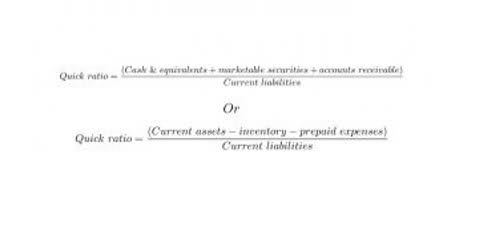Supermarkets and Grocery Stores Software LEAFIO AI Retail Solutions

Grocery stores that produce food on-premises—such as pizza, bread, and salads—also manage the inventory of foodstuffs and ingredients that aren’t for sale directly. The inventory of certain types of goods, such as soda and snacks, is managed by their vendors (known as vendor-managed inventory) and is counted as inventory by the grocer as the vendor adds those items to shelves. Unplanned spot checks aren’t a replacement for scheduled, full-stock tallies, but they are essential to keep a firm handle on your inventory counts. When employees don’t know if a surprise inventory sample is coming, they adhere more closely to inventory accuracy best practices daily and may be discouraged from stealing. Digital floor and pallet scales verify incoming order weights and quantities down to the pound upon delivery.

Improve grocery store inventory management software KPIs
The first key performance indicator for grocery stores is sales per customer. This KPI lets you analyze customer spending by examining the average transaction size. Are most customers coming to your store for a full haul of weekly groceries, or are many just stopping in to grab a few ingredients? grocery store accounting Understanding this data allows you to take steps to boost the average basket size in your store. Several daily supplier deliveries allow a retailer to accommodate actual demand by placing orders as close to the different ordering deadlines as possible using the latest demand and inventory data.
Average Inventory Turnover

Use labels noting expiration dates and log periodic waste audits to further dial in ordering for demand. Next, you will want to set dynamic reorder points for every product in your catalog. Examine point of sale data to see the average weekly or monthly demand for your products, taking seasonal variability into account. Apply temporary price cuts or cross-merchandising around slow sellers to encourage movement. Keep close tabs on stagnant products to determine if you need to stop carrying them altogether. But if you have the right strategy and equipment, you can mitigate the potential damage to your bottom line.
Microservices architecture for composable supply chain optimization
RELEX helps grocers manage their inventory planning to make the best use of products’ shelf-life information and category-level consumer behavior to cut food waste. RELEX provides up-to-date visibility into inventory levels and product movement, allowing retailers to quickly identify and address any issues that arise. This visibility can help improve the overall efficiency of the supply chain and reduce the risk of waste due to expired or unsellable products.
Predictable events, such as increased demand for salads and beverages in the summer months and increased demand for soups and savory dishes in the winter, are easier to plan for. Omnichannel inventory management requires the inventory team to adapt to the evolving landscape, where flexibility in forecasting and cost optimization through automation becomes paramount. Transferring these goods out provides an accurate picture of store inventory to inform purchasing decisions, while freeing up room for new products.
What is inventory management software for grocery stores?

Each product is assigned a unique barcode that contains all relevant information such as price, description, and quantity. When items are scanned at various stages of the supply chain, including receiving and selling, the system automatically updates inventory levels in real-time. Many companies are struggling to control inventory levels while managing customer demands across multiple channels.
This means that as soon as the required store stock-ups for promotions are planned, they will be visible in the distribution center forecast on the proper dates and quantities. One powerful method for increasing https://www.bookstime.com/ store replenishment efficiency is to optimize the use of different pack sizes. In many cases, stores can choose whether to order case packs, pallet layers, or full pallets from the distribution center.
This model will optimize our replenishment strategy, ensuring inventory optimization and reducing the number of deliveries from your Warehouse. The goal is to understand the impact of adding business features (price change, sales trend, store closing, etc.) on the model’s accuracy. Inventory management is a multi-level process, where each section of the supply chain performs its own function while cooperating with other teams and departments.
- Well-managed store replenishment is central to finding the optimal balance between the risk of lost sales margins caused by stock-outs and the risk of waste or markdowns eating already slim margins.
- However, demand patterns are often complex and influenced by various factors, including seasonal fluctuations, promotions, and unpredictable consumer behavior.
- This approach results in fewer stockouts of the products retained in the assortment, emphasizing depth over breadth.
- Here are some of the different types of supply chain visibility for grocery retail.
- See how Oracle Retail’s grocery solutions deliver a more efficient shopping experience.
- By adopting effective inventory management strategies, grocery stores can effectively manage their inventory, optimize stock levels, and achieve sustainable financial growth.
- One key feature of inventory management software is its ability to forecast demand accurately.
- This can help thwart the well-known “reach into the back for the freshest carton of milk” phenomenon, and it’s crucial to maintaining margins.
- Inventory management software is necessary for grocery stores because it helps track and manage stock levels efficiently.
- Many companies used periodic inventory accounting to “tighten up” and identify errors and scrap rates.
- Inventory management refers to the day-to-day operations that keep inventory moving through a distribution network.
- That means it’s a lot harder for retail grocers to use consumer data productively.
When introducing a new product, the most common approach is to assign a reference product to use as a blueprint for its sales pattern until the new product has accumulated sufficient historical data. However, in grocery retail, the number of new products per year can be massive, making manually identifying and setting reference products infeasible—or at least highly inefficient. These issues and many others are in constant flux and significantly impact market trends. In retail, significant gains come from small improvements across countless SKU-store combinations.

ارسال یک پاسخ